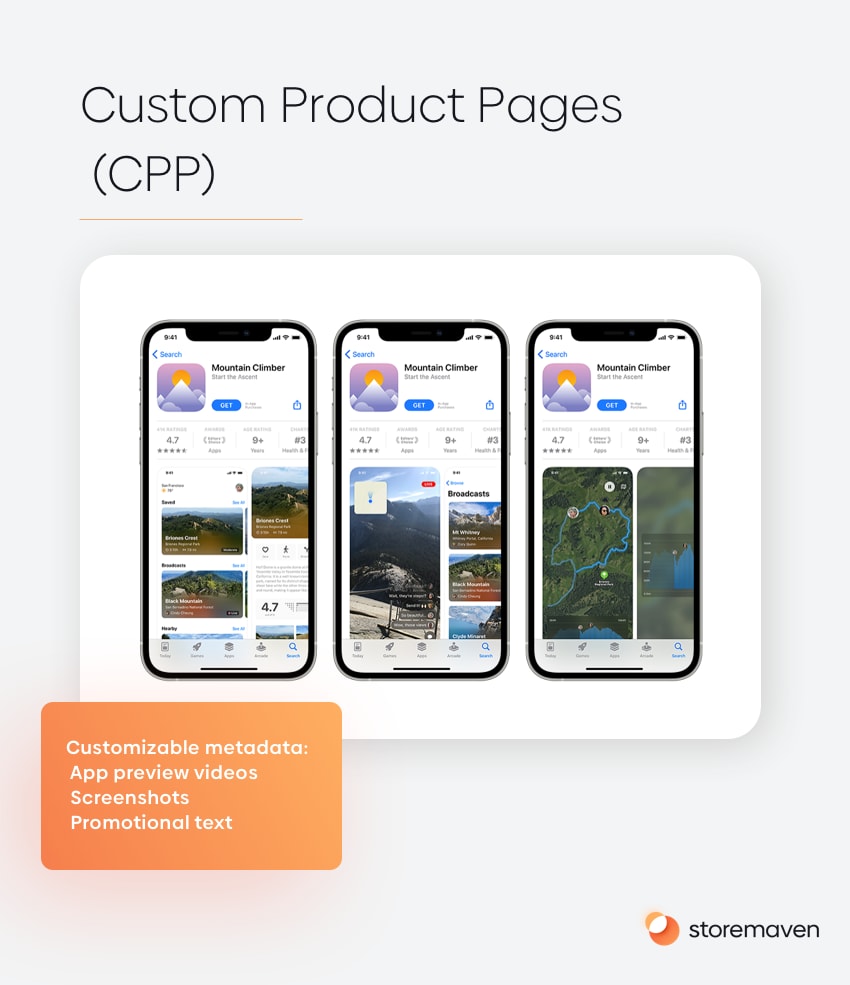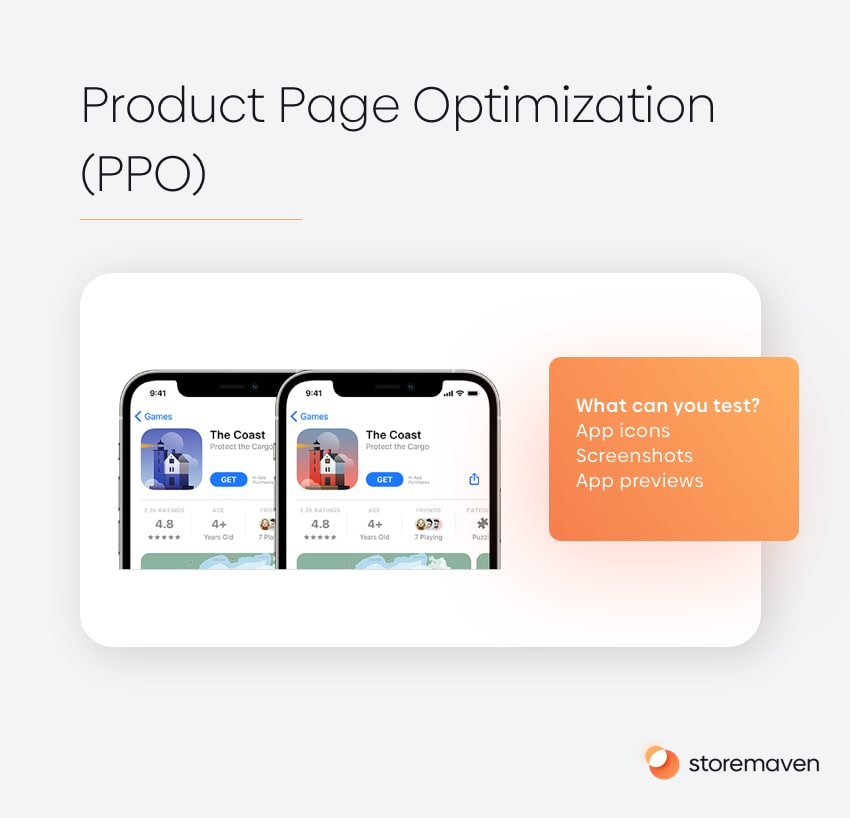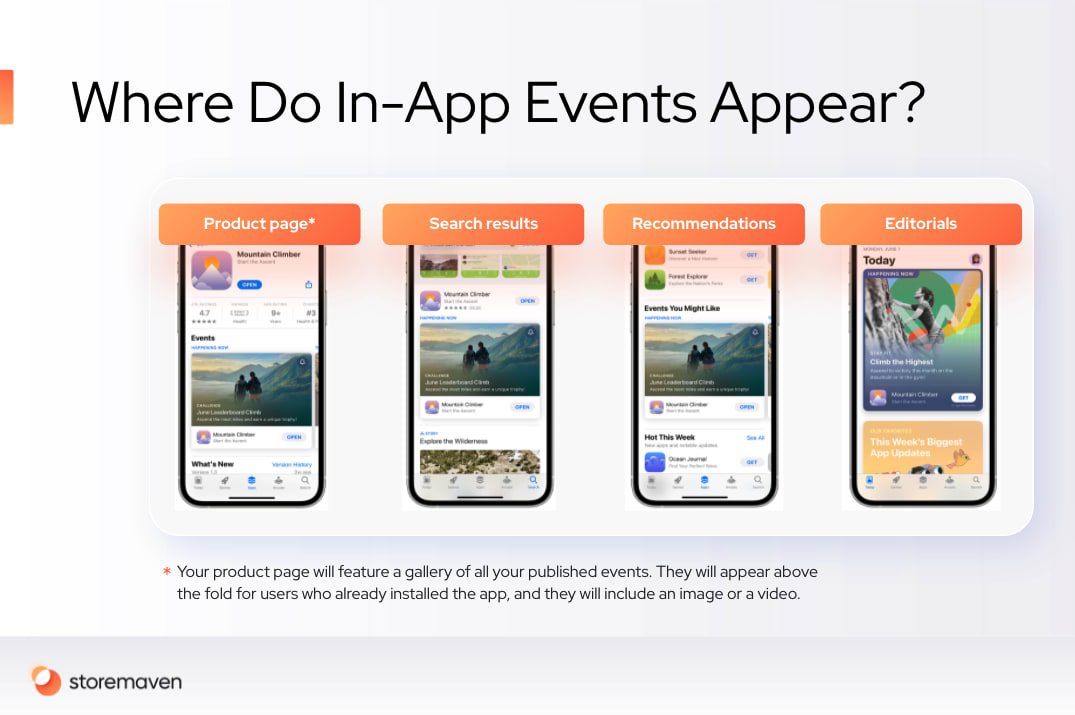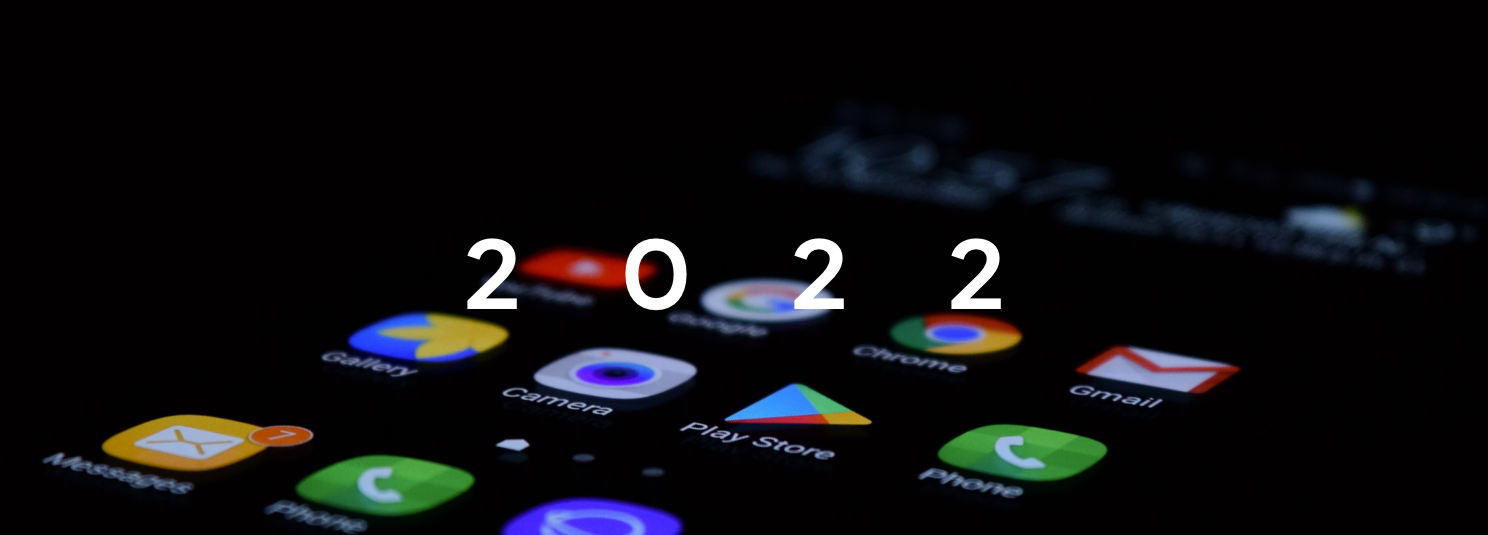The state of the mobile marketing industry in 2021 has been covered from every possible angle by every possible team, including by Storemaven. So when I sat down to think about what would be valuable for mobile marketers as a recap of last year, I realized that looking ahead to 2022 would be much more helpful.
I also thought that the 90,000-foot view of massive industry moves like M&As and the future of various vendors is interesting but less valuable. At the end of the day, you have a job to do, and knowing the ins and outs of industry M&As won’t help you.
To succeed in marketing, be it organic or paid, you need a clear understanding of the major challenges and a round-up of mobile marketing industry trends and how they will (or won’t) be solved in 2022.
It will allow you to sit down with your teams, review the challenges, and discuss how you’ll maximize growth in 2022 in light of them. We’ve been speaking with dozens upon dozens of industry experts and leaders from all sides of the ecosystem – vendors, platforms, game companies, app companies, UA leaders, ASO leaders, and more.
This note will discuss how the actual challenges ahead of you might play out in 2022. No absolutes or wishful thinking, simply the combination of market consensus and our take on it (as folks that think about and research the industry 24×7.)
After talking with marketing leaders from around 70% of top-grossing mobile brands in the market, both apps and games, six questions surfaced. How will the measurement challenge be solved? How will the lack of targeting capabilities work itself out? What are the roles of CPPs, Product Page Optimization, and In-App Events? How important will they be for paid and organic growth in the App Store? What would a great data stack look like for marketing teams in 2022? And how should marketing teams make data-driven decisions when the data they rely on becomes unreliable?
Let’s dig in.
- Question #1: How will the paid measurement challenge be solved?
- Question #2: How will the targeting challenge be solved?
- Question #3: What role will Custom Product Pages play in 2022?
- Question #4: How will Product Page Optimization (PPO) a/b testing impact creative optimization?
- Question #5: What role will In-App Events (IAE) play in 2022?
- In Conclusion
Question #1: How will the paid measurement challenge be solved?
The current affairs on paid install measurement are somewhere along the following lines:
- Apple’s SKAdNetwork isn’t a complete solution. Due to its attribution logic, built-in timer, privacy thresholds, as well as clear design flaws that remain unfixed – it underreports on significant volumes of installs and conversionValues.
- Self Attributing Networks such as Facebook are unable (or refuse) to leverage the same fingerprinting mechanics that other networks do. This means they cannot self-attribute installs and downstream metrics at an ad campaign, ad-set, and ad level. This makes it extremely hard to get true ROAS.
- Other ad networks are still able to use fingerprinting in order to attribute installs to their source at a campaign, ad-set, and ad level with the help of MMPs.
In this environment, spending media budgets on Facebook and other SANs is challenging, as it’s extremely difficult to prove the ROAS for these campaigns. This has led many brands to shift spend towards other ad networks, as well as towards the Android ecosystem.
The decision-making process for UA is now fragmented as a result, and making decisions isn’t easy.
What type of solutions will we see the industry embrace? Fingerprinting as a mechanic will eventually die out. There are multiple reasons why it’s still not enforced by Apple, but eventually, access to IP addresses for devices will be limited, and fingerprinting as a method will become mostly useless as a way to acquire data to help make UA budget allocation decisions.
Keep your eye on Apple for whether they start enforcing the ban on fingerprinting more aggressively. At the end of the day, I didn’t find any party or person in the market that believes fingerprinting is a long-term viable solution. This manifests itself in the form of companies building out alternative UA decision-making engines.
Whether it’s media-mix-modeling, incrementality testing and measurement, hold-out studies, or other methods, it’s clear that the winning brands in 2022 will be those whose accepted-upon source-of-truth system does not take just one data source into account, or only relies on one thing (such as fingerprinting).
Apple didn’t start a war on the ability of brands to measure the effectiveness of paid media spend and how many installs or sales it is able to drive. It started a war with several parties in the ecosystem (Facebook to name one), and on the practice of creating granular user-graph based on their device activity data across all apps and websites for targeting purposes.
So it is likely, in my view, that Apple will provide more and more tools to developers to measure their campaigns in an aggregated, privacy-first way, through improved SKAdNetwork features, or more aggregated data available to developers.
Read more here: Why Custom Product change UA and ASO forever
Question #2: How will the targeting challenge be solved?
The next question is around targeting and given the “war” mentioned above, the lack of targeting capabilities ad networks such as Facebook can offer to mobile advertisers.
One quick look at the rate at which paid mobile UA teams have pulled their budgets from Facebook is enough to understand the implications of this.
But if mobile games and app UA teams can’t rely on these ad networks to provide them with a constant stream of high-quality users, where can they reach their audiences?
One of the main trends happening today is the move towards contextual advertising and marketing. Instead of letting the networks find your audience, you now need to do the work of figuring out where they are in order to direct your ad spend there (in games for example, which other games they’re playing).
In-kind of a surprising twist of events (I would never have guessed it 3-4 years ago), ad networks such as Ironsource, Applovin, Vungle, Unity, and more, became a massively important tool to achieve success with contextual advertising – especially for game UA teams.
These ad networks were all contextual at their core (they couldn’t use an elaborate user-graph such as the one Facebook used, but they can reach users while they are playing specific games, and in a very specific state-of-mind and context).
So in 2022, we will see the majority of marketing teams acquire a deep understanding of who their audiences are, and where they can reach more of them. We will see more contextual campaigns that are directed at specific game genres or sub-genres through these ad networks as a way to continue and grow an audience, as opposed to the extremely broad targeting in networks such as Facebook.
Shameless plug – Storemaven launched an audience segmentation tool that can help you visualize and identify where your most important users are coming from, so you can excel with your targeting and win more of them. Check out Funnel Analytics here.
Lastly, as more teams embrace a holistic approach to measuring their paid spend, more teams will be able to understand the true (and huge) value of brand marketing campaigns and how they affect growth drivers such as branded search, higher conversions across the funnel and more.
To conclude, the industry will go through user-level data-based targeting rehab, and see that they could still achieve great growth rates nonetheless.
Question #3: What role will Custom Product Pages play in 2022?
The topic of CPPs is vast, and the industry will experience its true force in 2022. As more and more teams start experimenting with CPPs, they’ll discover two things:
- Custom Product Pages (with tailored creatives and messaging deployed for specific contextual campaigns) have the power to dramatically improve conversion rates, paid growth rates, cost-per-install, and ROAS.
- Custom Product Pages provide never before seen data from App Store Connect that helps with understanding the impact of paid campaigns in an aggregated way.
These two value drivers will lead to wide industry adoption, as ASO teams would use the expertise they acquired over the past several years to improve conversion rates for paid campaigns on the App Store, and UA teams will start viewing each paid campaign that doesn’t leverage a CPP as a missed opportunity.
Moreover, the data that UA teams can glean by leveraging CPPs in the right way will add incredibly important signals to their UA decision-making.

In the very short term, CPPs will be adopted by all ad networks because they support the setting up of campaigns using CPPs as the destination, not the default App Store page. A further acceleration is the fact that Apple Search Ads will support data from CPPs early in 2022, and all other networks will race to create feature-parity with them.
To unlock this growth, teams would need to focus on multiple areas. For example, identifying the top opportunities for CPPs and prioritizing them (which networks, campaigns, ad creatives, and sub-publisher genres), planning the pages with strong hypotheses, and translating them into designs. When multiple pages are live, there will be a need for strong reporting mechanisms that always allow teams to understand which CPP is under/performing. And lastly, the ability to test and improve CPPs (the same way every UA team is improving ads, and every ASO team is improving their default product page).
Another short shameless plug -> Storemaven created a platform that helps with all of the above. If you feel like having a look, check it out here, then book a call with our team to see how we can help.
To learn more about Custom Product Pages:
Apple officially launched CPPs and PPO, what should you do next?
How to strategize, plan and create your first App Store Custom Product Pages
Question #4: How will Product Page Optimization (PPO) a/b testing impact creative optimization?
In late 2021, a ton of chatter was heard around the ability to use PPO to a/b test the default page on the App Store. That being said, a myriad of limitations is leading to the fact that: Teams are struggling to run tests at scale.
With PPO hopefully improving over time, teams will start viewing it as a way to improve conversion rates on the organic side (as more and more paid traffic will be funneled through CPPs).
This organic product page optimization operation (mouthful!) will be adopted by all companies that have, for many reasons, neglected it for the past few years. Plus, the ability of teams to create a robust optimization process (research, hypothesizing, design, and analysis) will separate teams that would win on the organic side from those that don’t.

PPO will also be, until improved, a trigger for teams to test and improve their product page conversion rates, a need that won’t be met completely with PPO due to its limitations. But it’ll put more pressure on ASO teams to deliver. There will be less room for “excuses” on why conversion rates on the App Store aren’t higher, and more expectations from VPs of Marketing.
This clash of forces, more expectations from one side, and limited ability with PPO, would mean that most teams will take creative optimization in the store even more seriously and solving their testing needs still with the few options that exist on the market today such as Replicated Store Testing.
More on Product Page Optimization:
How to create, run and apply a test with Product Page Optimization?
All the ways to a/b test your product page for iOS 15
Question #5: What role will In-App Events (IAE) play in 2022?
In-app events are being adopted at scale across the industry. Although many think of ‘game ASO’ in regards to in-app events, this feature is being adopted by many app companies as well.
In-app events influence the layout of a product page, its search potential (as IAEs are indexed) and the probability to appear in featured placements (Apple promotes IAEs). So IAEs will play an important role for any organic mobile marketing & ASO team in their ability to improve discoverability and growth in the store.

Marketing leaders are starting to view this as a competitive advantage – why would your competitor win all that discoverability “capital” just by using in-app events and out-pace you?
Due to the above, in 2022 in-app events will become the standard of what most app and game product pages look like. This will also lead to further need for planning them, optimizing their designs for maximum conversion rates, and even testing them over time.
Check our discussion with Twitch and AppTweak: How to maximize growth with In-App Events?
Also, have a look here: The beginner’s guide to In-App Events for iOS 15
In Conclusion
In 2021, the industry has been preparing. More and more changes were thrown at your teams, and solutions have just started to be adopted and embraced.
To win in 2022, every paid and organic team will need:
- To figure out their measurement suite and stack, and create a source of truth that doesn’t rely on just one methodology or data source. This will allow smart decisions to be made that can increase growth, even without deterministic attribution data.
- To leverage contextual marketing and advertising in order to overcome the challenge of lack of targeting capabilities on Facebook and the like. Plus, a greater understanding of who their audience is and where they’re coming from, at a sub-publisher level.
- To embrace CPPs for use with contextual advertising, maximize paid conversion rates and ROAS, and win back accurate data on campaign performance as surfaced by each CPP.
- To ensure a solid and robust creative optimization process is being used so that higher expectations around optimizing product pages can be met (both the default organic one and your CPPs), and to deal with the limitations of PPO.
- To take in-app events into account as standard. Without embracing them, important discoverability potential for an app or game will be lost.
To see Storemaven platform in action, feel free to ask for a call with our mobile growth experts to walk you through how you can start implementing this today.












